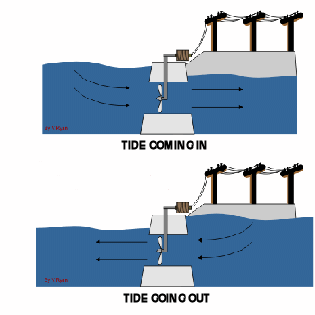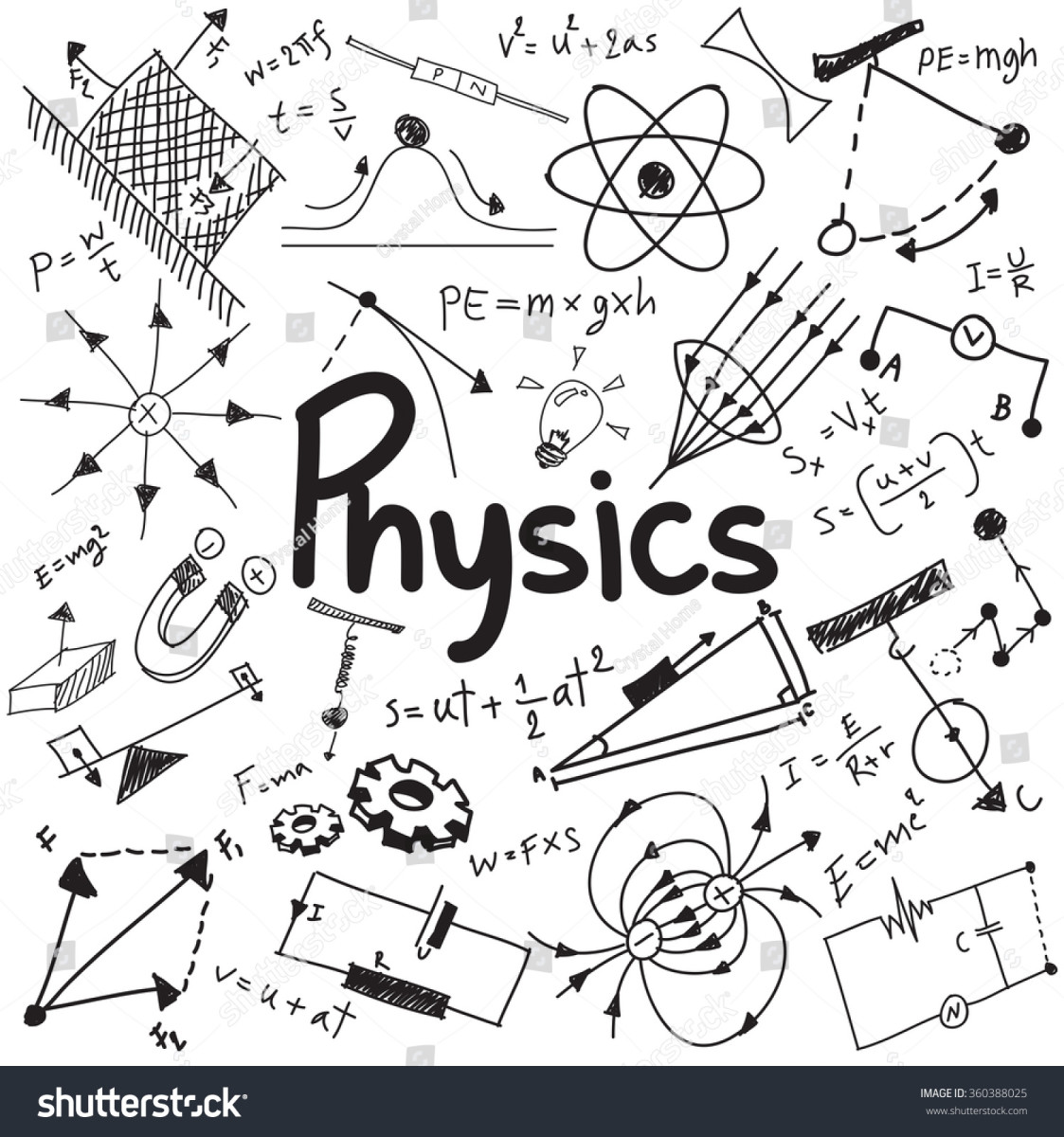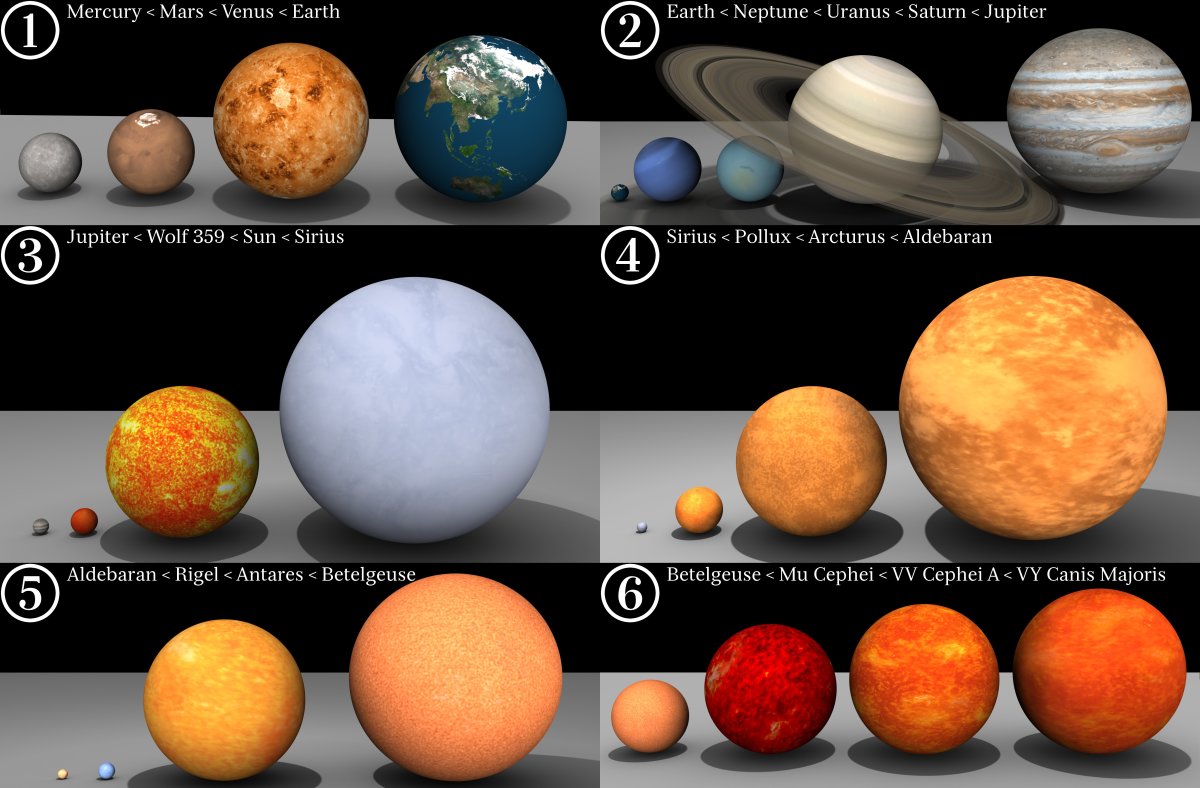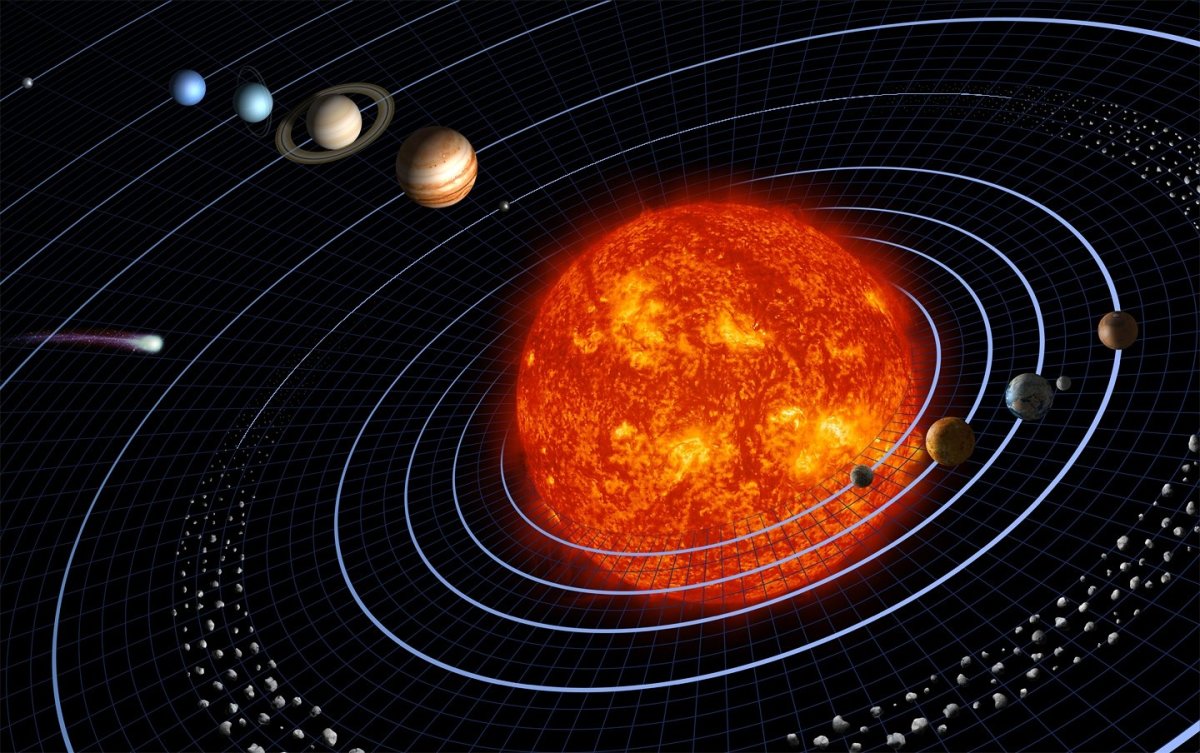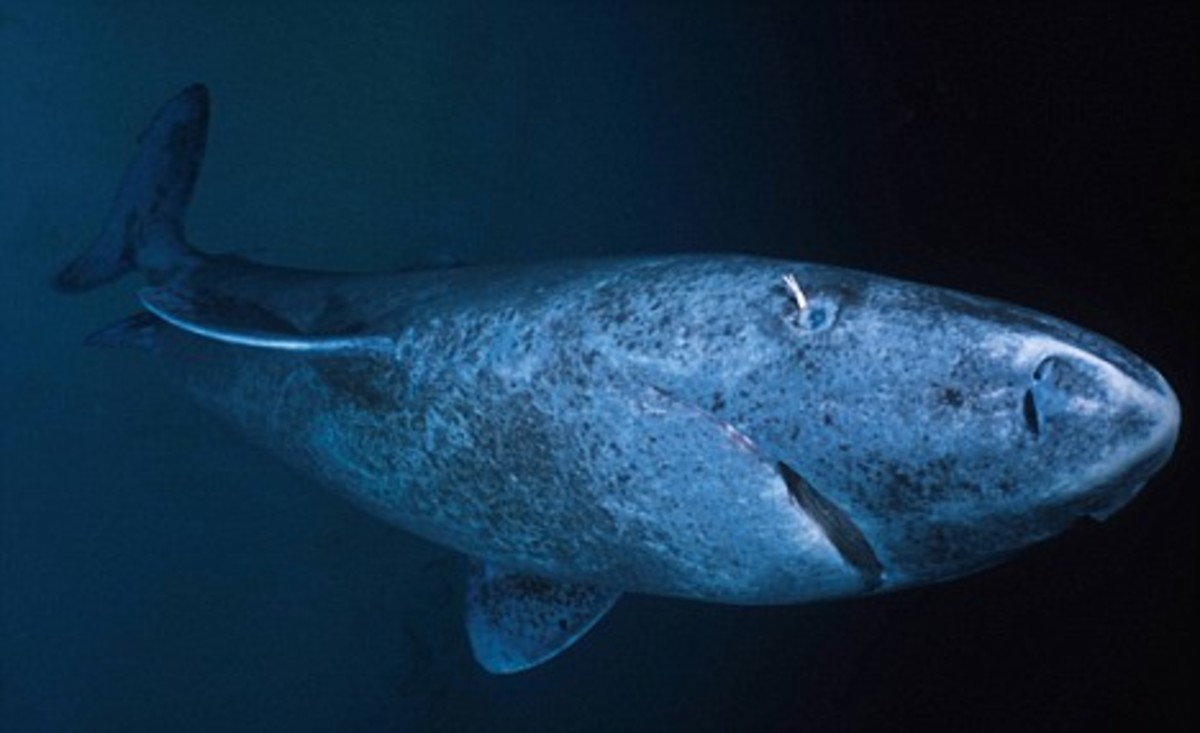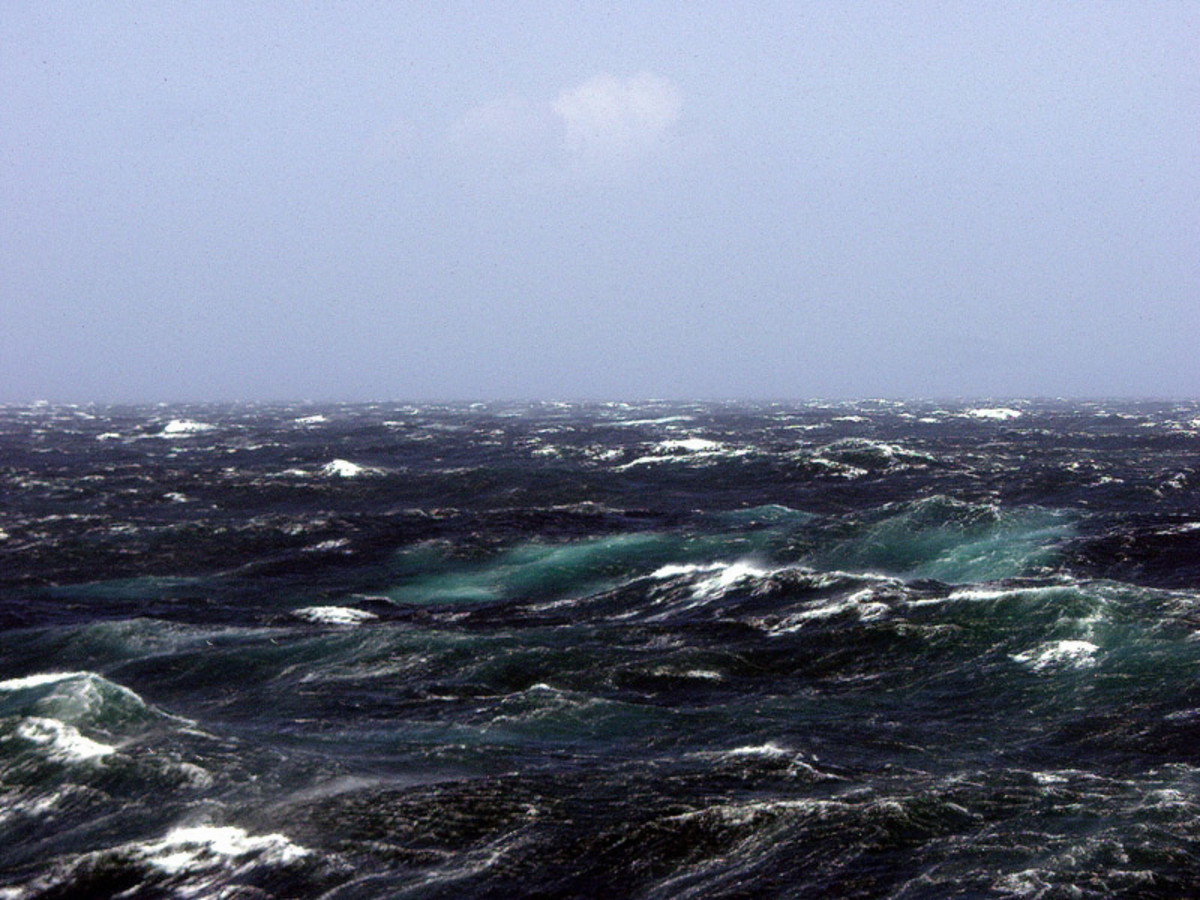Tides - an interaction between the Sun, the Moon and the Earth
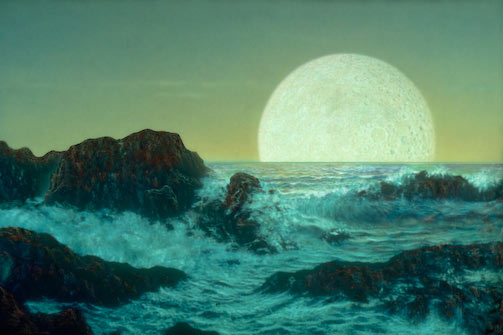
The periodic rise and fall of sea level is a result of gravitational attraction of the Moon and Sun. This vertical movement of water is called tides. The gravitational attraction is the force of attraction that bodies apply on one another as a result of their mass. The gravitational pull caused by the moon is called lunar tides and the sun causes solar tides. Because the moon is much closer than the sun, lunar tides are stronger and have a great influence over tides on Earth.
Lunar Tides
Although the Moon is only ¼ of the Earth’s size it still applies gravitational attraction on the surface of the Earth. When the Moon is directly over a given point on the Earth’s surface, it exerts a strong and effective pull on the water. This pull is powerful enough to raise the water above its usual level. This is the creation of a high tide and is also referred as a direct tide. On the opposite site of the Earth, due to the centrifugal force the influence of the gravitational pull creates a second high tide, called an opposite tide. The water level is lowered around the circumference of the Earth. Each day there are two high tides and two low tides (tide cycle). Lunar tides occur every 12 hours and 48 minute.
Solar Tides
As mentioned above, the Sun also exerts a gravitational attraction on the Earth’s water. However, the distance between the Earth and the Sun makes the pull less powerful (only 46%) in comparison with the Moon. Solar tides occur at every 12 hours at noon and midnight.
Spring Tides
The most extreme tides occur during the Full Moon and the New moon. These tides are called spring tides. Both phases of the Moon affect the sea level. In this period of time, high water is higher and low water is lower than during normal tides. Spring tides occur because the Sun, Moon and the Earth are in line with each other. Thus the Moon and the Sun pull the water at the same time – resulting in much more powerful pulls.
Neap Tides
The first and the third quarters of the Moon cycle also cause changes in the tides. During these phases of the moon, high water is lower and low water is higher than normal. These tides are called neap tides. This occurs as the Moon is at the right angles to the Sun relative to the Earth, so the pull of the Moon and the Sun opposes one another.
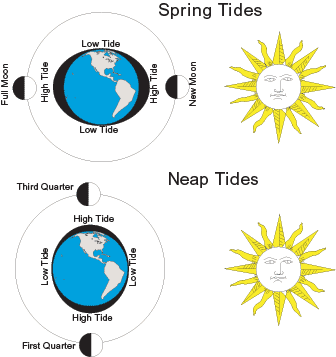
Tidal currents
Tidal currents occur when the water flows horizontally and is accompanied by the vertical movement of water (tides). It refers to the movement of water towards the shore in the period of high tide and away from the shore during low tide. Tidal current lasts for about 6 hours and 12 minutes. When there is no flood and ebb, the water is referred as slack water. The tidal currents are pretty predictable. They last for about 6 hours and 12 minutes. The predictability makes tidal currents an appealing option to generate power. Since few years few countries have started to make use of the tidal energy - a free, sustainable and reliable resource.
